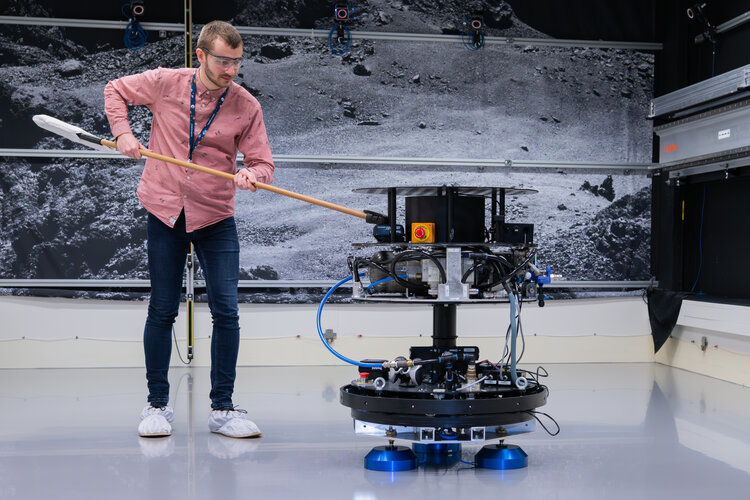ESA engineer Jules Noirant takes a broom to a satellite simulator platform, as it floats on a cushion of air over the flattest floor in Europe.
The goal is to test the ability of the REACSA platform’s guidance, navigation and control algorithm to respond to resistance to its programmed motion and overcome it.
See a video clip of the interaction here.
This ultra-flat 45 sq. m floor is the ORBIT (Orbital Robotics test Bench for Integrated Technology) part of the Orbital Robotics and Guidance Navigation and Control Laboratory at ESA's ESTEC technical centre in the Netherlands.
Rigourously kept clean of dust, ORBIT works like an air hockey table in reverse: air-bearing platforms are sent scooting across it, to simulate the free-floating behaviour experienced in space, except in two dimensions instead of three. Arranged around the floor is a motion capture camera system to track the precise movement of these platforms.
Recreating the weightlessness of space on earth is essential to validate orbital technologies before they are sent to space. Weightlessness effects can be counterintuitive – even a very light contact force often triggers a big change in motion, and nothing is anchored up in Earth orbit.
The ORBIT facility has been used to test the robotic capture of orbital debris, the operation of satellite interlocking elements in weightlessness, and soon for a new ESA Education campaign – the ESA Academy Experiments Programme.



 Image:
Human vs. hover-machine
Image:
Human vs. hover-machine